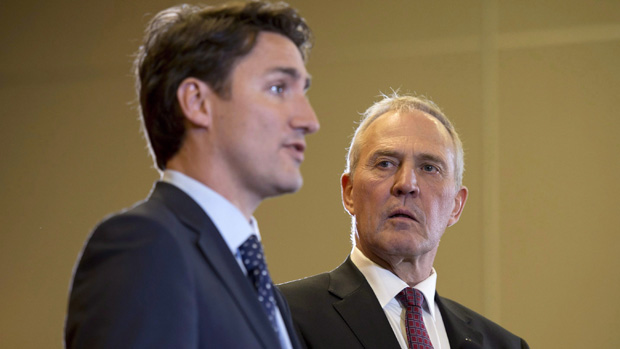
Is the Canadian Cannabis Experiment a Failure? – Cannabis News, Lifestyle
Is the Canadian Cannabis Experiment a Failure? Things may look rosy on the surface, but underneath, Canada’s legal cannabis regime is struggling. It doesn’t matter whether smaller craft businesses pay half of their profits to the federal government as consumption taxes or whether larger businesses make record losses. For many, the Canadian cannabis experiment is a failure.
excise duties
The biggest failure of Canada’s cannabis experiment comes from excise taxes. Because the government claims that activities like smoking or drinking are morally demeaning, they are subject to “sin,” or excise tax. This tax deducts $1 per gram of wholesale flowers, regardless of production cost or retail price. So if you produce wholesale cannabis at $8 per gram and your competitors produce cannabis at $10 per gram, you pay a higher tax because you are more productive and efficient.
In addition, large licensed manufacturers can absorb excise duties more than smaller manufacturers. All they have to do is sell cannabis at a loss and wait for their smaller competitors to starve.
“I think it probably speaks to how unhealthy the funding side of the industry is,” said Nawan Butt, portfolio manager at Purpose Investments.
“If you look at the biggest players, the amount of losses they’ve inflicted themselves this year, the numbers are absolutely staggering. And that’s because they can tap into the stock markets at any point they want to recoup those losses and try to hold market share to the point where, in this case, it’s survival of the fittest or survival of the fattest .”
Smaller niche players find their market share. But without the volume to increase their margins, they’re only staying alive because of tax breaks and flexibility offered by the Canada Revenue Agency.
“The healthy players are unfortunate to be in such a position because the larger LPs just don’t allow them to see the value they are creating in that environment. Because they have an almost unlimited bank account to tap into. Which frustrates the smaller LPs,” says Nawan.
Unprofitable LPs
The major licensed producers (LPs) represent the biggest failure of Canada’s cannabis experiment. They stem from the unconstitutional medicinal cannabis regime that former Prime Minister Stephen Harper tried to establish. These big pharma companies are now selling to recreational and medical customers.
They’ve never been cash flow positive. Before legalization, big LPs inflated the potential of the cannabis market. They forecast record numbers based on nothing at all. Canada’s top LPs like Canopy and Aurora reported sales more than triple the government’s forecast. Aurora claimed it grew a third of Canada’s cannabis. And despite a supply gap in the legacy market, Aurora continued to build greenhouses.
“If you take a look at the top players in Canada, you take a look at where their share prices compare to their all-time highs, and we take a look at losses of 99 cents on the dollar,” says Nawan. “It’s all to deter the shareholder for the LPs. And I’m surprised more shareholders aren’t appalled by some of the decisions management has made.”
Government bureaucracy ruined Canada’s cannabis experiment

It’s clear that federal bureaucracy ruined the Canadian cannabis experiment. It was a failure before the first retail store even opened. “My experience working in government is that people who work in government know what they are doing. This is a program destined to fail. Nobody in government wanted cannabis legalization,” said David Hurford, honorary secretary of the BC Craft Farmers Co-Op.
Back in 2016, Justin Trudeau said the Canadian cannabis experiment was not about “creating a boutique industry.”
And that’s evidenced by simple packaging instructions, imprecise warning labels, and the big red “THC” label on all cannabis products (including pure CBD strains). Or through an application process for producers that requires tens of thousands of dollars in seed capital, through provincial monopolies as distributors, and in some provinces through crown corporations that handle all retailing.
“I think the world is watching the Canadian experiment and we’re not giving them positive signals on how to run this business,” Nawan says.
Future of the Canadian Cannabis Experiment
“I think the Canadian market is still very far from its final stage. There is still a lot to do,” says Nawan.
Which kind of work? First, excise taxes are crippling the industry. Unlike other “sinful” industries, the government collects the tax from manufacturers, not retailers. If the government wants to label cannabis use immoral and tax people for it, it shouldn’t impose more than 10% of the retail price.
Second, politicians can cut state bureaucracy. Give provinces more power and eliminate Health Canada’s involvement in recreational cannabis. By giving each province more responsibility, a Canadian cannabis experiment that works for everyone can be ensured. Places like British Columbia can have their boutique industries, while Quebec can continue its strict anti-business and public health approach.
Third, reform the licensed producer system. Again, production licenses are something the federal government can pass on to the provinces. Something is going wrong at the federal level. Or it was designed to fail. However, that’s not how you legalize cannabis.
“If we look at some of these US players, they’re doing it right,” says Nawan. “They’re the ones who are tight-belted and in this environment where they don’t really have stock markets to tap, run and scale. They make the best of what they have and I think Canadian LPs can learn a lot from them.”
“I’m just very disappointed that it’s been almost four years since legalization and our top five LPs aren’t turning a profit yet.”
If that doesn’t suggest the Canadian cannabis experiment failed, then what does?

Post a comment: